Marcel Proust famously meditated on the evocative power of “a biscuit in some tea,” his experience of eating a “petite madeleine”:
… in that moment all the flowers in our garden and in M. Swann's park, and the water-lilies on the Vivonne and the good folk of the village and their little dwellings and the parish church and the whole of Combray and of its surroundings, taking their proper shapes and growing solid, sprang into being, town and gardens alike, all from my cup of tea.
I’ve been thinking lately about Proust’s memory of the village of his childhood. Don’t we all have such memories?
I was most likely only four years old when my mother took me along with her on an errand to the Bank. In our very small Pennsylvania town, this was a walk of only about two or three blocks. We probably made that trip frequently, but I remember that early spring (or, if you will, late winter) morning vividly— because of a Fastnacht.
At that age, I probably didn’t yet know those many landmarks that would later define my childhood geography. Just before arriving at the Bank, Mom and I would have passed one: Wismer’s, its dark hardwood floor, smooth with wear, pitching and bellying, like the deck of an ancient ship. It was stocked from floor to ceiling—yard goods, twine, an extensive, colorful thread collection. But what drew us kids in was the large display case with its curved-glass front filled with penny candies. There before us were the world’s largest and most imperious jawbreakers, endless licorice strands—in either red or black—and Horehound drops, to name just a few. As Mrs. Wismer waited patiently behind the counter, we each in turn would try to make up our minds, shifting from foot to foot, pennies clutched in our little fists, slow to decide in the face of so many irresistible choices.
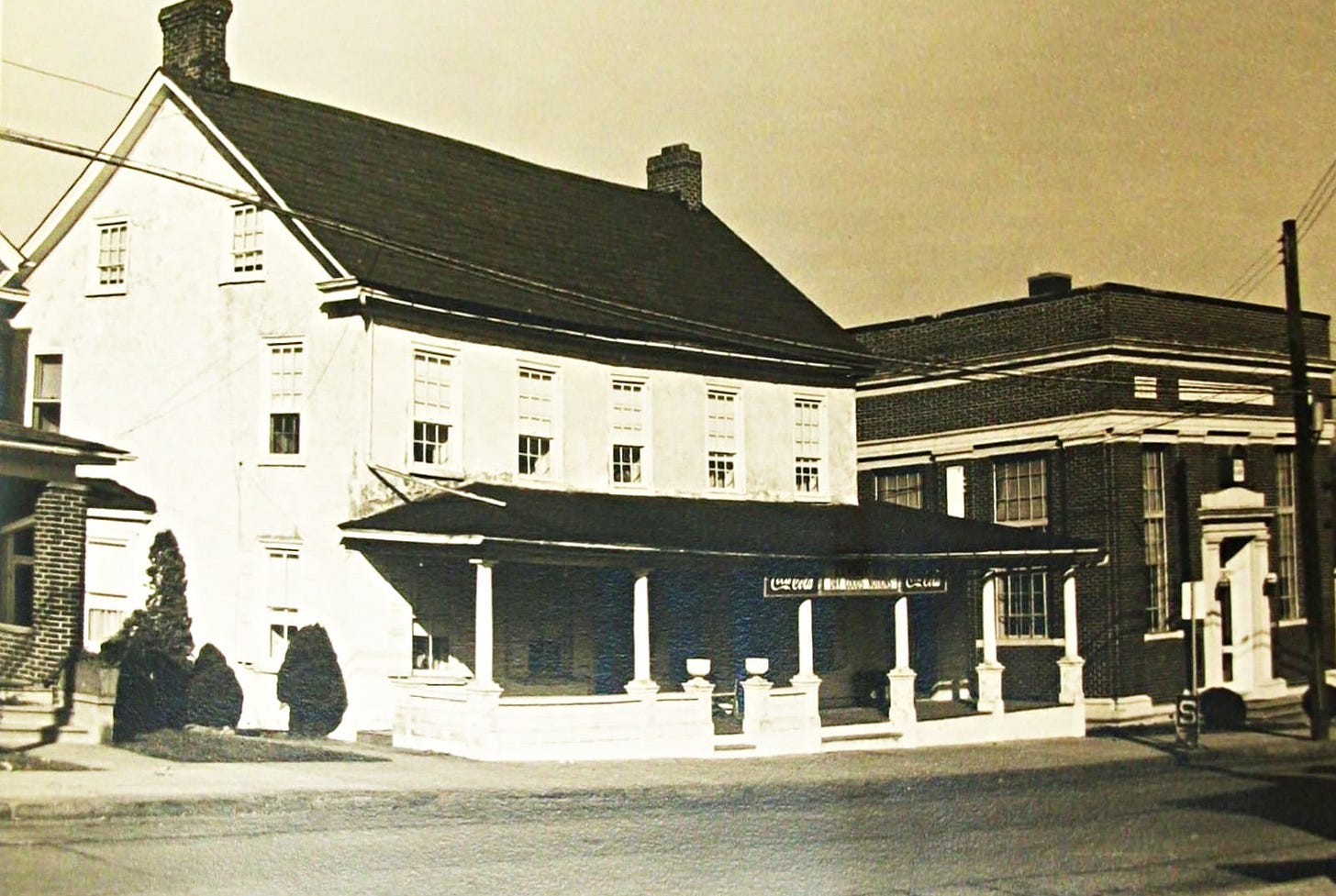
After passing Wismer’s, my mom and I were then at the Bank—a big box of a brick building, the very embodiment of a solid, reliable institution—with its large four-sided clock attached on its northeast corner, well above the intersection of Main and State—posing the eternal question: is time the friend or enemy of wealth?
Before we went in the Bank, however, I looked up to see a woman standing on the sidewalk next to a small table. I don’t think either of us had seen this woman before. She exchanged a few words with my mother, none of which I understood or recall today. Then she leaned over and handed me a Fastnacht (also spelled Fasnacht), although at the time I had no idea what a Fastnacht was. She was handing them out gratis, apparently, it being Shrove Tuesday—or, as she certainly would have called it, Faasnachtdinschdaag, in the local German dialect. She may have been dressed all in black, slightly bent with age, with a hint of a smile in her very pale blue eyes.
I can’t describe what that Fastnacht tasted like, other to say that it was something I would never forget. Sorry. Just the tiniest degree of sweetness, perhaps, but with a completely satisfying mouthfeel, moist but not greasy with the frying oil (lard, certainly) and a light airiness of a yeasted dough.
Was it the taste of the Fastnacht or was it my awareness of the beauty of that morning that secured it in memory? There is something about the morning sunlight on a day late in February, still slanting low from the eastern sky, the trees without a hint of buds of spring—although the already lengthening days give promise of it—and the chill air so fresh and crisp. And thinking back on it, I’m remembering living in a time of such childhood innocence, before there was any awareness of all that later would be troubling, disturbing, and even terrifying.
Chagall has his fiddler levitating over the rooftops of his Eastern European shtetl, and I similarly can’t think of my childhood village without imaging that woman, her card table loaded with her Fastnachts at her side, floating over the rooftops of the little dwellings and churches, over the town and gardens alike, her black overcoat flapping in the breeze, with her hint of a smile.
Wismer’s and the Bank are long gone. And long ago I gave up any attempt to recreate my experience of that first Fastnacht. Surely that would be an exercise in futility.
I like to think that the recipe for that Fastnacht was passed down for centuries, originating in a Mennonite kitchen somewhere in the Rhineland-Pfalz. The recipe that follows includes a bit of potato (more a symbol than a necessary ingredient), which should satisfy the purists. Although the idea of Faasnachtdinschdaag is to load up on fat and carbs right before the fasting time of Lent, note how frugal this traditional recipe is—one egg, a little sugar, not much butter.
This recipe is loosely derived from Edna Eby Heller’s The Art of Pennsylvania Dutch Cooking (1968).
Ingredients (makes approx. 30 Fastnachts)
1 medium to small potato (for the dough, you’ll only need 1.5 oz./40g)
2 tbsp. butter
½ cup sugar [111g] (consider reducing the sugar by one-half if you want to dredge them in sugar after frying)
1 egg, well beaten
¾ tsp. salt
1 ¼ tsp. active dry yeast [5g]
1/8 cup warm water [16g]
3 cups all-purpose flour [389g]
Oil for frying (2-4 cups)
Preparation
1. Cook the potato in salted water until it is soft for mashing. Save just short of a cup (more precisely, 7/8 cup, 207g, or 7 oz.) of the potato water. You can peel, slice, and measure the potato before cooking, but I usually cook the entire potato with the skin, then when it is cooled, peel and cut it to have a small chunk, about 1/8 cup (approximately 1.5 oz./40g). Mash it.
2. In a large bowl, stir the mashed potato into the sugar until well mixed.
3. Add the beaten egg and salt, mix well. Mix in the potato water and add the yeast.
4. Stir in the flour, starting with about half, then adding the remaining, and mix completely. You should have a shaggy, rough dough.
5. Knead the dough for about five minutes until it’s smooth and elastic. Form the dough into a ball, and place it in a greased bowl, cover, and let rise to double in bulk. (My original recipe calls for 2-3 hours rising time, which is very optimistic in my experience, so I leave it out to rise, then I store it in the refrigerator overnight, and fry the next morning.)
6. About an hour before you plan to fry the Fastnachts, knead the now-risen dough again for about a minute. (If you’ve refrigerated the dough overnight, take it out in time to warm to room temperature.) Roll it into a rectangle or square about 1/3 inch thick. I usually do this right on the counter, very lightly floured. Cut the dough into rectangles, 2-by-3 inches is a traditional shape. Cover with a damp cloth, let rise again for at least an hour.
7. Fry in neutral oil that tolerates higher temperatures (I use canola or safflower oil or a combination, whatever is left over from frying latkes in December—remember, this Shrove Tuesday concept to accomplish some early spring cleaning) at 375 degrees. I use a Dutch oven, which has the high sides that prevent the oil from splashing out. The dough, in batches of about five Fastnachts each, will float in the oil, so you’ll be flipping them to brown them on both sides. I use a thermometer to test the temperature, and I find that 375 might be a bit on the high side; adding the dough to the oil will bring its temperature down, and they seem fine at 350 or so. Once browned on both sides, take them out.
8. After frying, let the Fastnachts cool on paper towels. After they’ve cooled to handle, they can be rolled in granulated sugar, with or without cinnamon, or in confectioner’s sugar.
9. Fastnachts are best eaten right after cooking, although I’ve stored them in an air-tight container for a few days. Very good with coffee or tea, and because they are not that sweet to begin with, they are excellent with jelly or jam, such as Joe’s Jam, which I highly recommend.
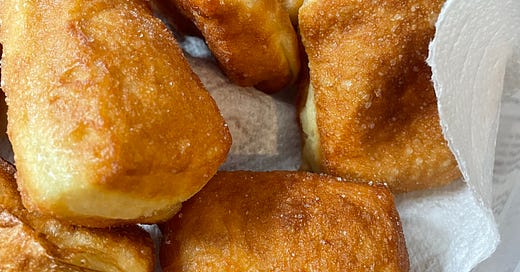


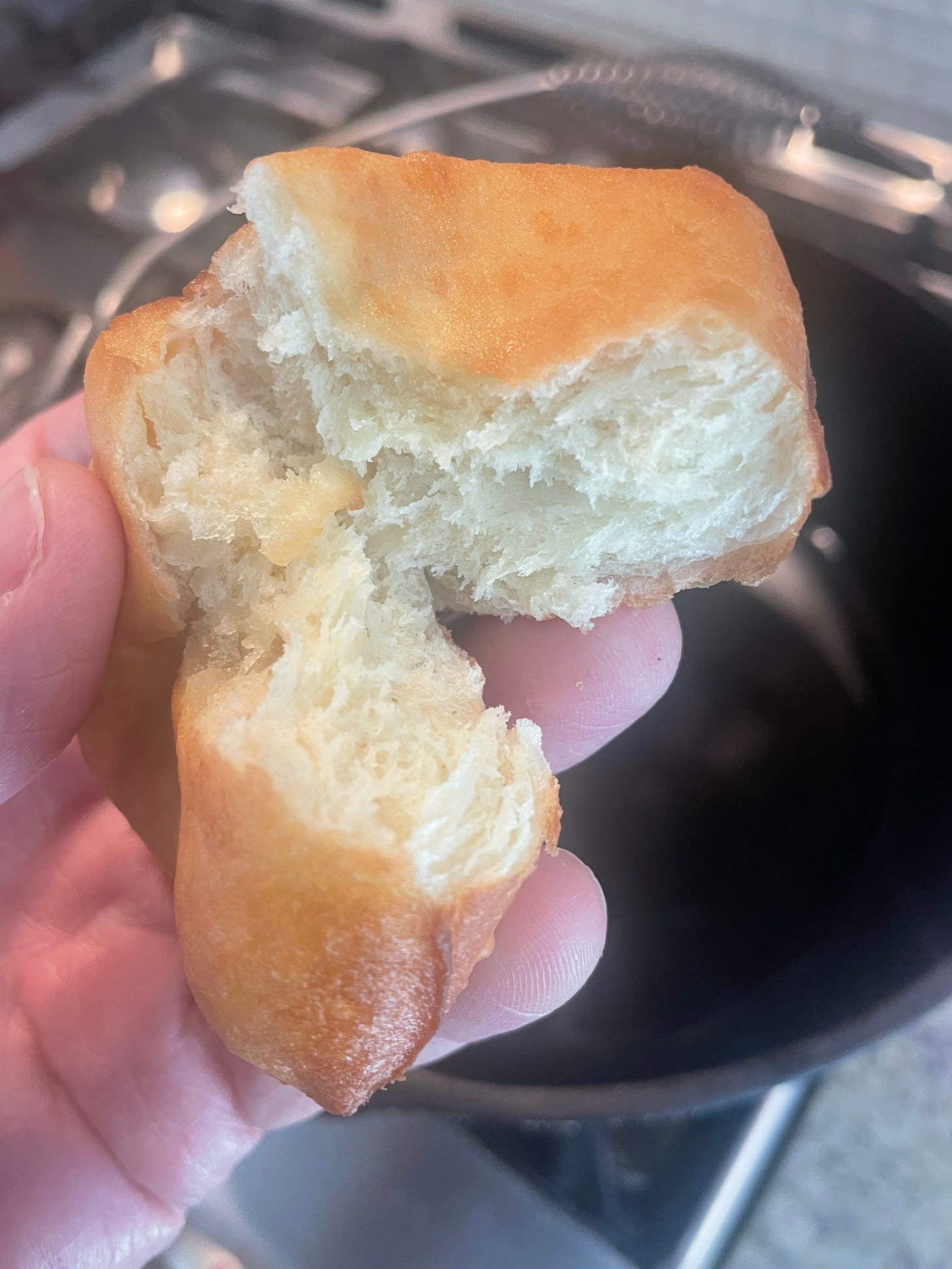
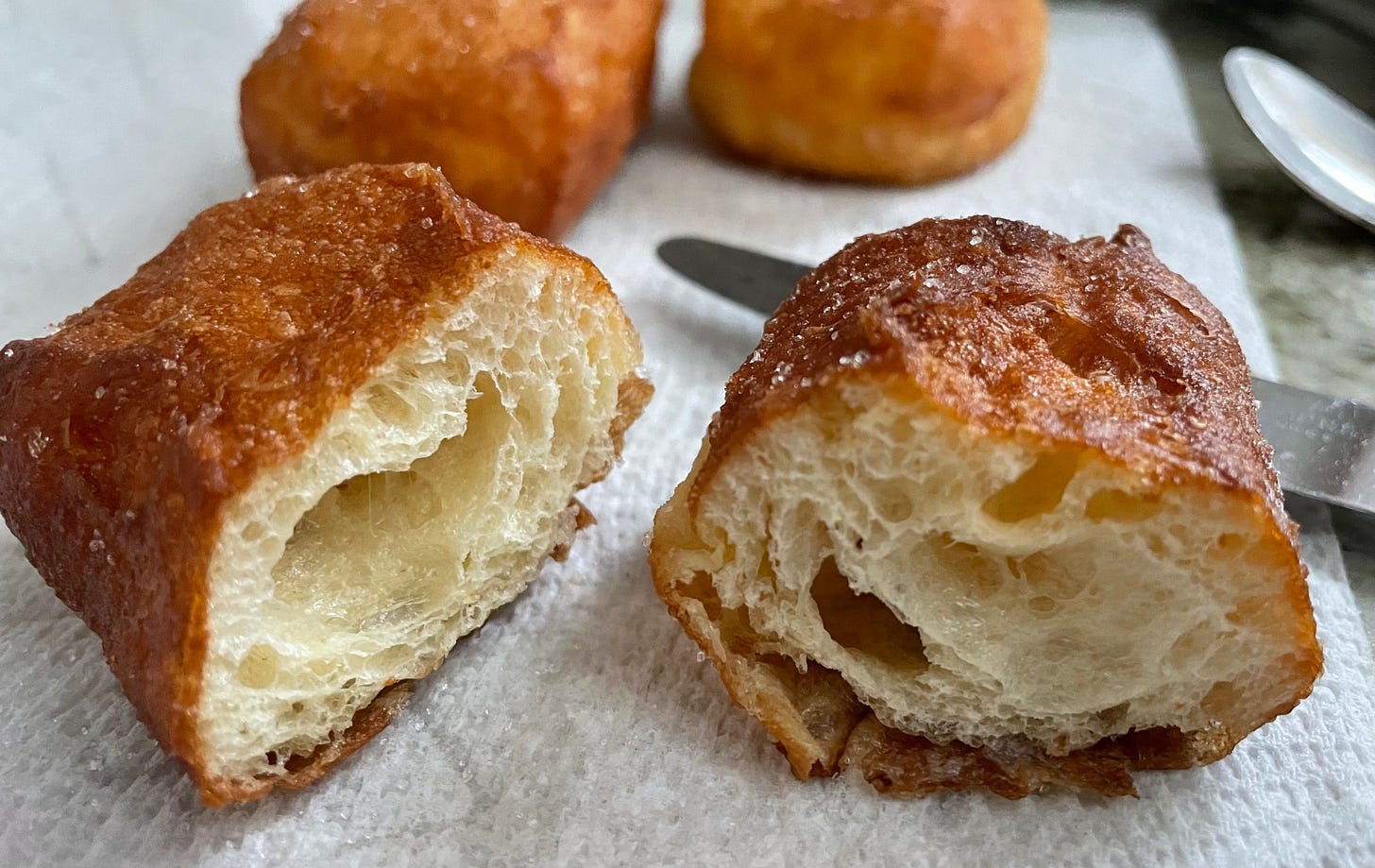

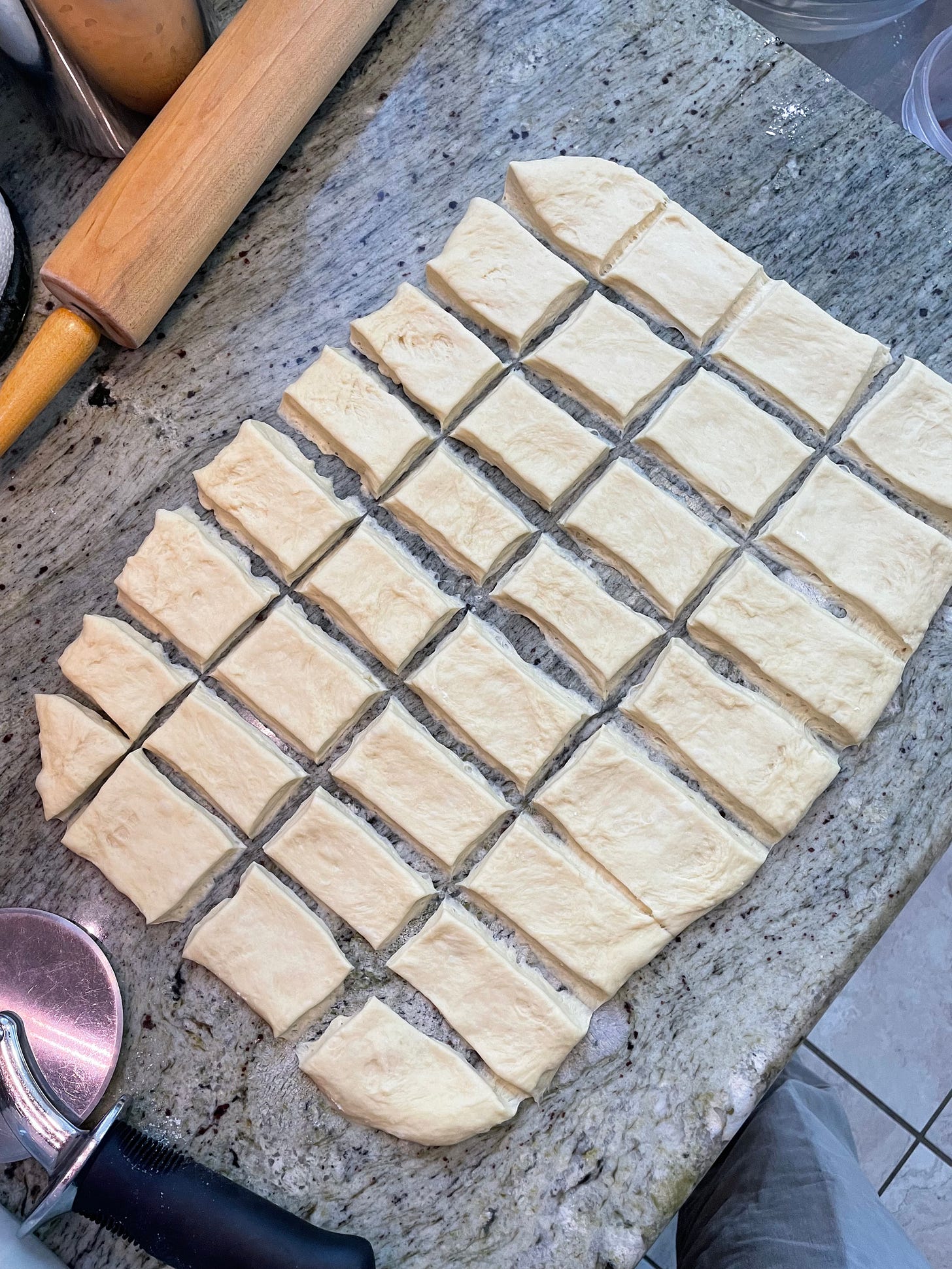
As a sister to the author, I can verify and agree with his sentiments. Although I may not have had Fastnachts from the woman he spoke of, I do recall this strange type of bread as part of local customs. And his recollections of Wismer's is spot on! Thanks for sharing the memories, David.